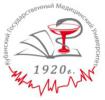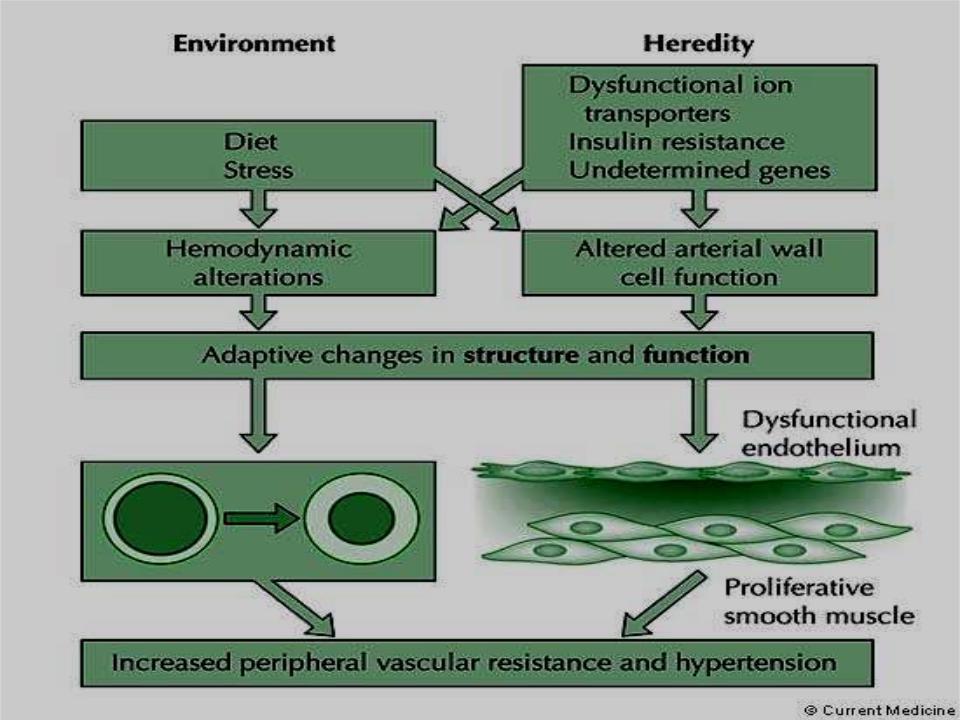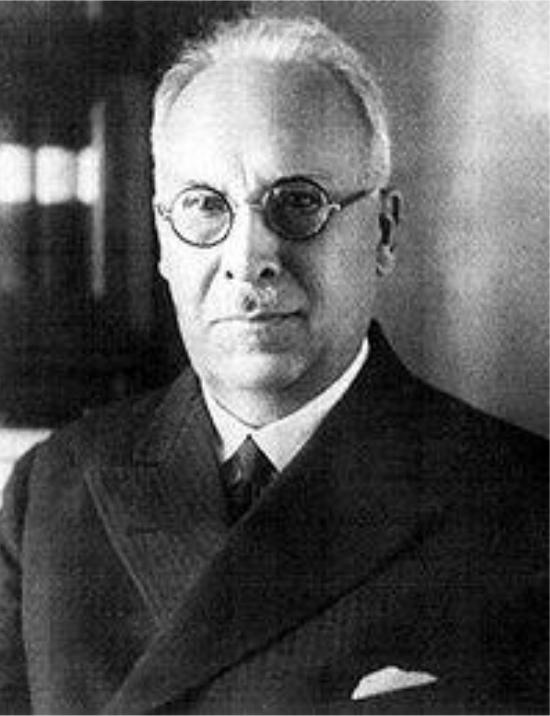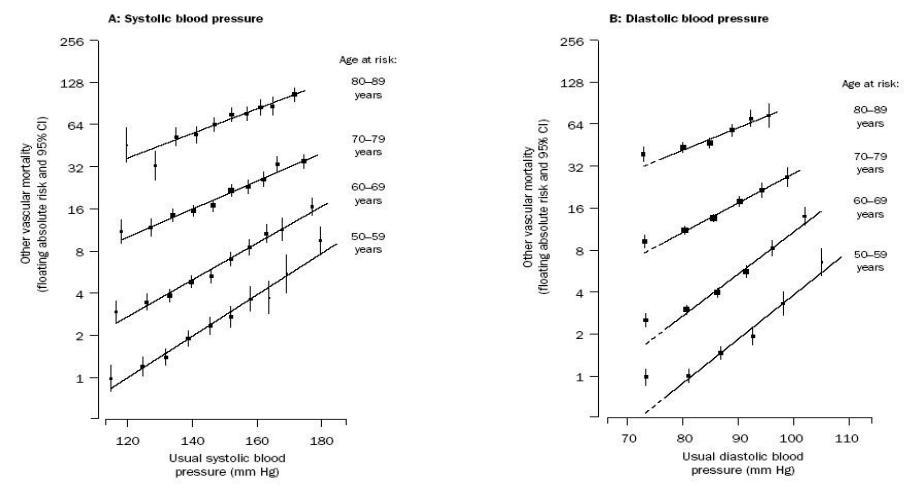
Cardiology / English / ГБ на английском языке для иностранцев
.pdf
Federal State Budgetary Educational Institution of Higher Education "Kuban State Medical University" of the Ministry of Health of the Russian Federation
Arterial Hypertension
Department of Internal Propedeutics
diseases
Definition of Hypertension:
1.Hypertension is a clinical syndrome, defined as systolic blood pressure ≥ 140 mmHg and/or diastolic blood pressure ≥ 90 mmHg.
2.Hypertension should be considered a major risk factor for an array of cardiovascular and related disease as well as diseases leading to a marked increase in cardiovascular risk.
Etiology of Hypertension:
1.Genetic factors play an important role. Children with oneor two-hypertensive parents have higher blood pressures.
2.Environmental factors also are significant. Increased salt intake has long been incriminated as a pathogenic factor in essential hypertension. It alone is probably not sufficient to elevate blood pressure to abnormal levels; a combination of too much salt plus a genetic predisposition is required.


George
Fedorovich
Lang 1875-1948 The disease of unresponsiv e emotions.
Pathogenesis:
1.The pathogenesis of essential hypertension is multifactorial.
2.Sympathetic nervous system hyperactivity. It is most apparent in younger hypertensives, who may exhibit tachycardia and an elevated cardiac output. However, correlations between plasma catecholamines and blood pressure are poor.
3.Renin-angiotensin system (RAS). Renin acts on angiotensinogen to cleave of the ten-amino-acid peptide angiotensin I. This peptide is then acted upon by angiotensinconverting enzyme to create the eight-amino-acid peptide angiotensin II, a potent vasoconstrictor and a major stimulant of aldosterone release from the adrenal glands.
4.Defect of natriuresis. Hypertensive patients exhibit a diminished ability to excrete a sodium load. This defect may result in increased plasma volume and hypertension.
5.Intracellular sodium and calcium. An increase in intracellular Na+ may lead to increased intracellular Ca2 + concentrations as a result of facilitated exchange. This could explain the increase in vascular smooth muscle tone.
6.Exacerbating factors. The best-documented is obesity, which is associated with an increase in intravascular volume and an elevated cardiac output. Some hypertensives respond to high salt intake with substantial blood pressure increases. Excessive use of alcohol also raises blood pressure. Cigarette smoking acutely raises blood pressure.

Blood pressure levels and risk of
cardiovascular death:
The Lancet, 2002
Clinic:
Complaints:
a)Headache, dizziness, fainting;
b)Nausea, vomiting;
c)speech disorders, coordination of movements;
d)visual impairment, "flies" before the eyes, nose bleed;
e)pain in the heart (aching, stitching) and Sometimes by the type of angina pectoris, inspiratory dyspnea;
f)frequent urination general weakness, decreased ability to work.
Inspection, palpation and percussion:
a)hyperemia of the face or pallor;
b)pulsation of the jugular fossa, aa. carotis;
c)R. altus, magnus, durus;
d)the apical push is displaced to the left and down, strengthened, broadened, medium or high amplitude, resistant;
e)the borders of the heart are expanded to the left - aortic configuration;
f)accent I tone on the aorta, weakening | tones at the top; BP is above 140/90mm Hg. st ;
h)ECG signs of left ventricular hypertrophy X-ray and EchoKI confirm anatomical and hemodynamic changes associated with increased fundus;
i)hypertensive retinal angiopathy (narrowing of the arteries, dilatation of the veins).
